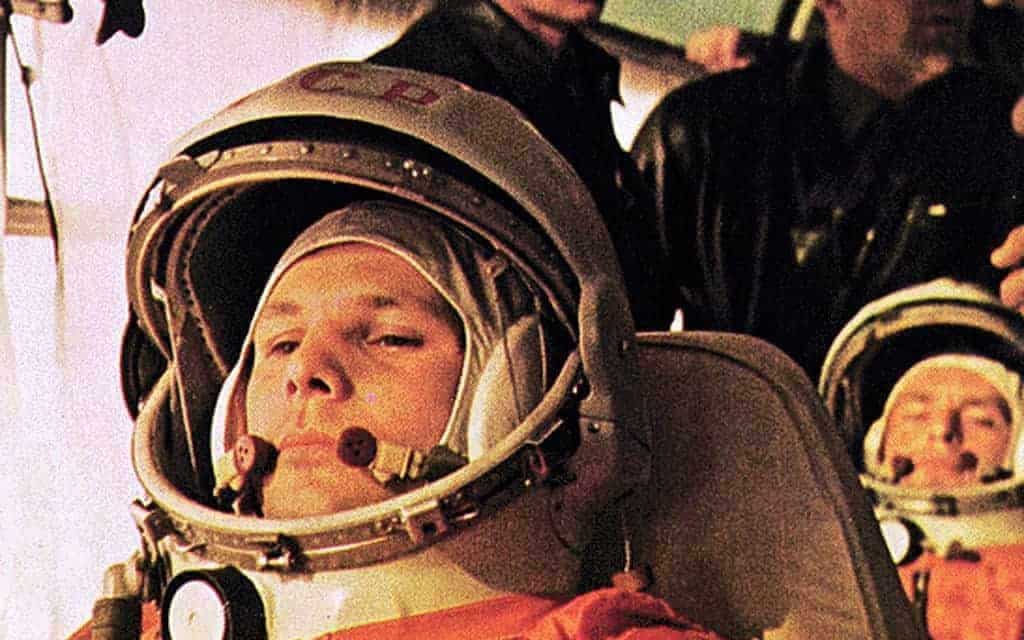At the beginning of the year 1961, no man had ever left the Earth. People had dreamed of it. They’d gazed wistfully at the stars. But no one had ever been there. Yuri Gagarin was about to change that. On April 12, 1961, Gagarin sat on a launchpad in Kazakhstan inside the capsule of the Vostok 1. The capsule had manual controls, but they were locked. No one had any idea how weightlessness would affect a cosmonaut. They couldn’t risk Gagarin being knocked out and left unable to operate the craft. Instead, the Vostok 1 would be controlled from the ground. All Gagarin could do now was strap himself in and wait as the rockets fired.
The Vostok screamed through the atmosphere, breaking through into low orbit. For 108 minutes, Gagarin took in a view that no human being had ever seen before. The Earth curved gently below him as he circled the planet. He could see the lights of cities shining in the night and, just minutes later, the deep blue of the day-lit oceans. Finally, as he floated over Africa, it was time to come back down. The Vostok’s rockets fired, guiding the capsule back out of orbit. Gagarin was the first man in space, but could he also be the first to come back alive?

The Soviets had carefully designed the Vostok capsule to see Gagarin into space. But they had no plan to get it back with Gagarin still inside. The reentry capsule had no parachutes or thrusters to slow it down for a safe landing. Instead, Gagarin had to ride the capsule through the atmosphere and eject seven miles up. From there, he floated back to Earth with a parachute. According to international standards, the mission wouldn’t count as a spaceflight unless Gagarin actually returned inside the ship. But the Soviets had a simple solution to that: they just told everyone he had.
News of Gagarin’s flight spread around the world. In the US, the public reaction was mixed. Some wondered at the breathtaking achievement and the potential it had for the future. Others saw the Soviet victory as a defeat for the US. At a time when many worried that communism was set to take over the Earth, the idea that the USSR might come to dominate space as well was terrifying. But in Moscow, the public was ecstatic. Gagarin was given a parade through the city as hundreds of thousands stood along the streets and on the roofs cheering the latest Soviet hero.

But all Gagarin really wanted- all he’d ever wanted- was to fly. Gagarin was born in a small Russian village, and from a young age, he’d been interested in flight. As a teenager, he learned to fly by volunteering as an air cadet. By 1957, he was a fighter pilot in the Soviet Air Force. He was one of the first to volunteer to be a cosmonaut. To become one, he’d endured a period of training so intense that out of 20 prospective cosmonauts, only Gagarin and one other volunteer made it through. As a cosmonaut, he’d flown higher than anyone had before. Unfortunately for Gagarin, he would never get the chance to do it again.

